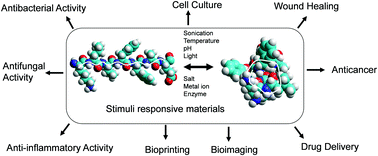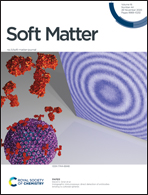Low molecular weight self-assembling peptide-based materials for cell culture, antimicrobial, anti-inflammatory, wound healing, anticancer, drug delivery, bioimaging and 3D bioprinting applications
Abstract
In this review, we have focused on the design and development of low molecular weight self-assembling peptide-based materials for various applications including cell proliferation, tissue engineering, antibacterial, antifungal, anti-inflammatory, anticancer, wound healing, drug delivery, bioimaging and 3D bioprinting. The first part of the review describes about stimuli and various noncovalent interactions, which are the key components of various self-assembly processes for the construction of organized structures. Subsequently, the chemical functionalization of the peptides has been discussed, which is required for the designing of self-assembling peptide-based soft materials. Various low molecular weight self-assembling peptides have been discussed to explain the important structural features for the construction of defined functional nanostructures. Finally, we have discussed various examples of low molecular weight self-assembling peptide-based materials for cell culture, antimicrobial, anti-inflammatory, anticancer, wound healing, drug delivery, bioimaging and 3D bioprinting applications.

- This article is part of the themed collection: Peptide Soft Materials


 Please wait while we load your content...
Please wait while we load your content...